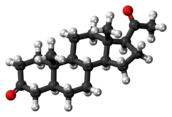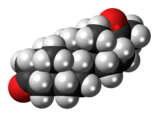
Back Organiese chemie Afrikaans Organische Chemie ALS Quimica organica AN Cōles gesceaftcræft ANG कार्बनिक रसायन ANP كيمياء عضوية Arabic كيميا عضويه ARZ জৈৱিক ৰসায়ন Assamese Química orgánica AST Üzvi kimya Azerbaijani
This article needs additional citations for verification. (September 2023) |
| Part of a series on |
| Chemistry |
|---|
 |
Organic chemistry is a subdiscipline within chemistry involving the scientific study of the structure, properties, and reactions of organic compounds and organic materials, i.e., matter in its various forms that contain carbon atoms.[1] Study of structure determines their structural formula. Study of properties includes physical and chemical properties, and evaluation of chemical reactivity to understand their behavior. The study of organic reactions includes the chemical synthesis of natural products, drugs, and polymers, and study of individual organic molecules in the laboratory and via theoretical (in silico) study.
The range of chemicals studied in organic chemistry includes hydrocarbons (compounds containing only carbon and hydrogen) as well as compounds based on carbon, but also containing other elements,[1][2][3] especially oxygen, nitrogen, sulfur, phosphorus (included in many biochemicals) and the halogens. Organometallic chemistry is the study of compounds containing carbon–metal bonds.
In addition, contemporary research focuses on organic chemistry involving other organometallics including the lanthanides, but especially the transition metals zinc, copper, palladium, nickel, cobalt, titanium and chromium.
Organic compounds form the basis of all earthly life and constitute the majority of known chemicals. The bonding patterns of carbon, with its valence of four—formal single, double, and triple bonds, plus structures with delocalized electrons—make the array of organic compounds structurally diverse, and their range of applications enormous. They form the basis of, or are constituents of, many commercial products including pharmaceuticals; petrochemicals and agrichemicals, and products made from them including lubricants, solvents; plastics; fuels and explosives. The study of organic chemistry overlaps organometallic chemistry and biochemistry, but also with medicinal chemistry, polymer chemistry, and materials science.[1]
- ^ a b c Clayden, J.; Greeves, N. and Warren, S. (2012) Organic Chemistry. Oxford University Press. pp. 1–15. ISBN 0-19-927029-5.
- ^ Elschenbroich, C. (2006) Organometallics 3rd Ed., Wiley-VCH
- ^ Morrison, Robert T.; Boyd, Robert N. and Boyd, Robert K. (1992) Organic Chemistry, 6th ed., Benjamin Cummings. ISBN 978-0136436690.


